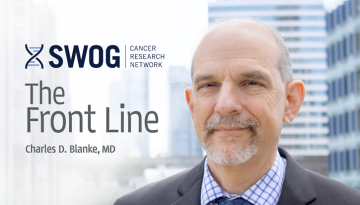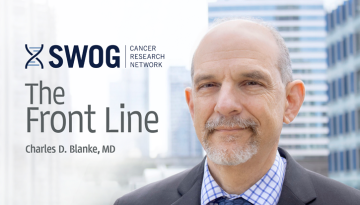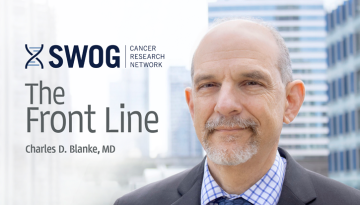SWOG Shines a Spotlight on Selection Bias
“Birthdays are scientifically proven to be good for you. After all, the more you have, the longer you live.” We all know statistics can be manipulated to make a point. And there have been a number of recent publications about trial results being massaged and presented in a way not born out by the actual data. At the other end of the spectrum, we have to be careful about assumptions at the front end of a study; Wrong ones result in misleading conclusions.
A new SWOG publication reminds us of the necessity of exercising caution when interpreting research data. In an article just published in the Journal of Clinical Oncology, SWOG biostatistician Dr. Cathy Tangen and her team showed that when it comes to prostate cancer, there is significant variation in which patients are recommended to receive a biopsy. This widespread detection bias was found after a fresh examination of data from the Prostate Cancer Prevention Trial (PCPT) and the Selenium and Vitamin E Prevention Trial (SELECT), SWOG’s landmark prostate cancer prevention studies. Tangen and her team reviewed data from over 17,000 men, including more than 2,200 diagnosed with prostate cancer over the course of the two trials. Results of the research surprised her.
“We assumed that prostate cancers are diagnosed uniformly, but that’s not true,” Tangen said. “We found a lot of variation in who got a biopsy. Risk and reality often didn’t line up. As a public health researcher, this concerns me. Bias can warp our understanding of the prostate cancer disease process – and misdirect our efforts to test new risk factors and prevention strategies in future research.”
On Monday, JCO published an editorial on Tangen’s work. Dr. Peter Albertsen from University of Connecticut Health Center wrote: “The key observation of the article is the recognition that the research community itself contributes to selection bias. In our zeal to identify risk factors for prostate cancer, we are biasing the prevalence data for this disease and potentially encouraging the wrong patients to undergo screening. Men with a family history of prostate cancer are frequently encouraged to undergo PSA testing. This, in turn, leads to a higher biopsy rate, which, because of the large pool of subclinical disease, leads to higher rates of prostate cancer diagnosis in this group of men, thereby ‘confirming’ the original hypothesis.”
So this research throws up a red flag. Evidence of factors reducing or increasing the risk of certain indolent cancers may be tainted because of that detection bias. Patients may choose a meaningless intervention or even one that increases chance of harm.
Dr. Ian Thompson, a co-author of the JCO article and our GU committee chair, reminds us: “Risk factors for cancer are complex. Before we all leap to conclusions, we need to collect very detailed research data on who is screened, and why, and be very rigorous in our analysis of that data and what it might mean for clinical care.”
Dr. Albertsen also notes the way to escape the vicious circle of researchers themselves introducing bias is to operate under this principle: “Clinical hypotheses should be confirmed by clinical trials before being widely adopted.”
Congratulations to Drs. Tangen and Thompson and their team. To learn more, check out the article and the editorial, as well as our press release.
Other Recent Stories



